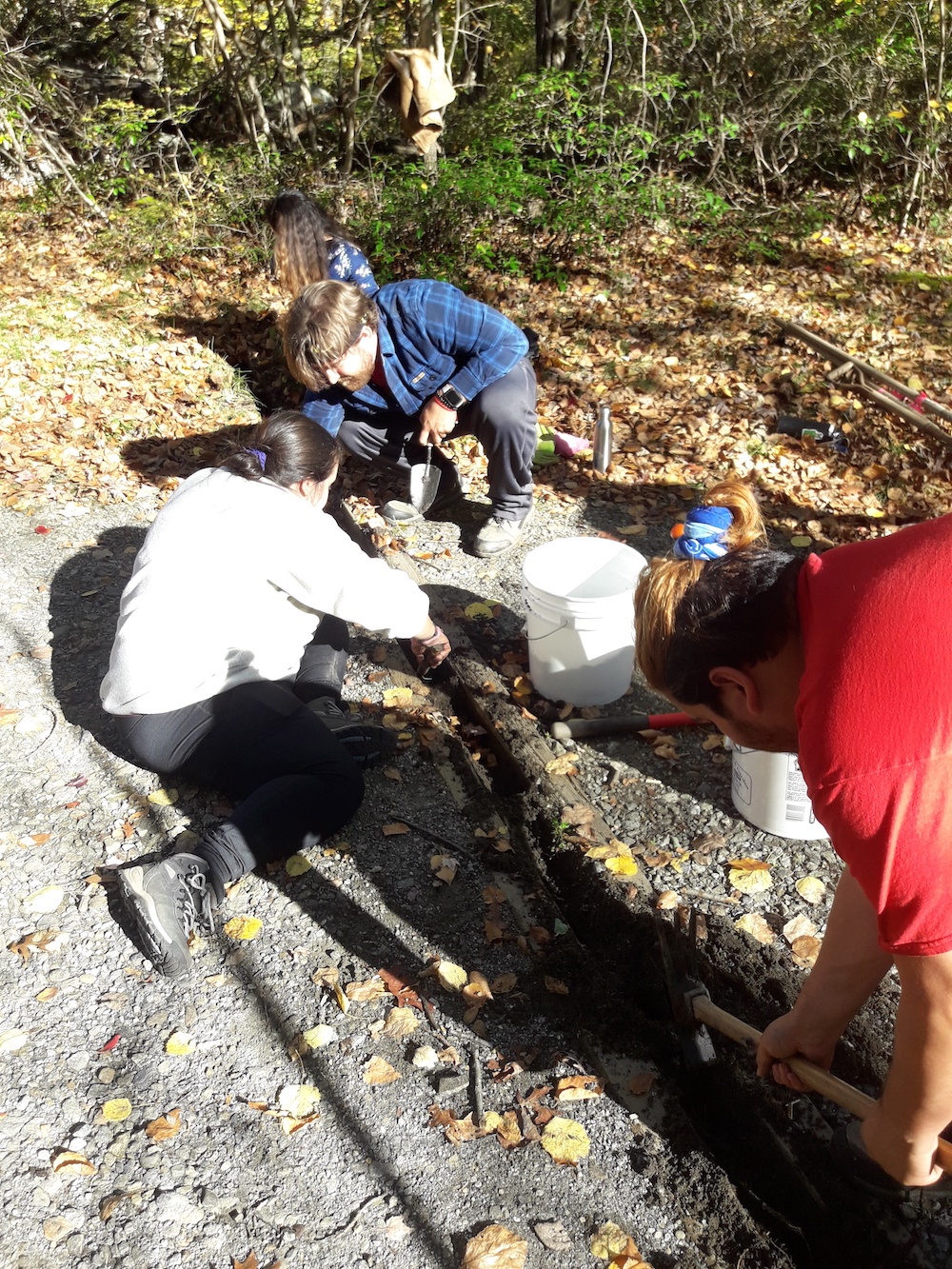Water bars, rolling dips, broad-based dips, and open-top culverts are examples of water diversion devices (WDDs) used on forest roads and trails. Their primary purpose is to control the volume and velocity of road surface runoff, thus preventing erosion.
They move water off the trail into areas with high infiltration and sediment storage capacity (e.g., the forest floor). WDDs are examples of forestry best management practices (BMPs) for water quality protection, and they need to be maintained to function properly.
One example of BMP maintenance is to remove sediment and debris that builds up in the bottom of open-top culverts. Plugged culverts cannot move water off the trail. Instead, surface runoff will bypass them, picking up volume, speed, and erosion potential. This was the case with some of the BMP demonstrations at the Lennox and Clearpool Model Forests in the fall of 2021. The purpose of this blog is to demonstrate how we cleaned them out.
At Lennox, I put on some work gloves and carried in a garden trowel and shovel. I started with the open-top pipe culvert and quickly learned that the trowel and shovel did not easily fit in the slots where runoff drops into the pipe. I found a sturdy stick instead to push the leaves and sediment toward the culvert’s outlet.
Open-top pipe culvert at Lennox Model Forest after cleaning.
This open-top pipe culvert is free of debris (mostly) and ready for the next rain event.
Next, I used the stick to clean out an open-top box and a pole culvert.
Open-top box culvert at Lennox Model Forest after cleaning.
Pole culvert at Lennox Model Forest after cleaning.
It took me about 1.5 hours to clean out three culverts and one rubber belt deflector. To be fair, the WDDs weren’t chock full of sediment. This trail receives minimal traffic (almost entirely foot traffic), and the area seems relatively dry.
This job was simple, but very satisfying. I don’t know if it was the fall scenery, the exercise, or the realization that these culverts were back to 100% capacity, but I highly recommend this activity, at least for short bursts.
At Clearpool, I had a team of friends to share in the joys of BMP maintenance. We spent 1.5 hours cleaning out open-top culverts that receive much more traffic (mostly from light vehicles) and surface runoff relative to those at Lennox. As such, there was more sediment to remove. Many thanks to Jess, Ryan, Leah, Eric, and Joey for their help. We made quick work of it and had a blast.

It took a team effort to clean out the open-top pipe culvert at Clearpool Model Forest. It was almost completely full of soil and tree roots had begun growing up through the pipe!

We cleaned out two open-top box culverts at Clearpool. Tools of the trade included work gloves, buckets, a small mattock and hand trowels.

A freshly cleaned open-top box culvert at Clearpool Model Forest.
To learn more about BMP inspection and maintenance, check out the Maintain My Trails activity on MyWoodlot. Thanks for reading.
Related blogs:









